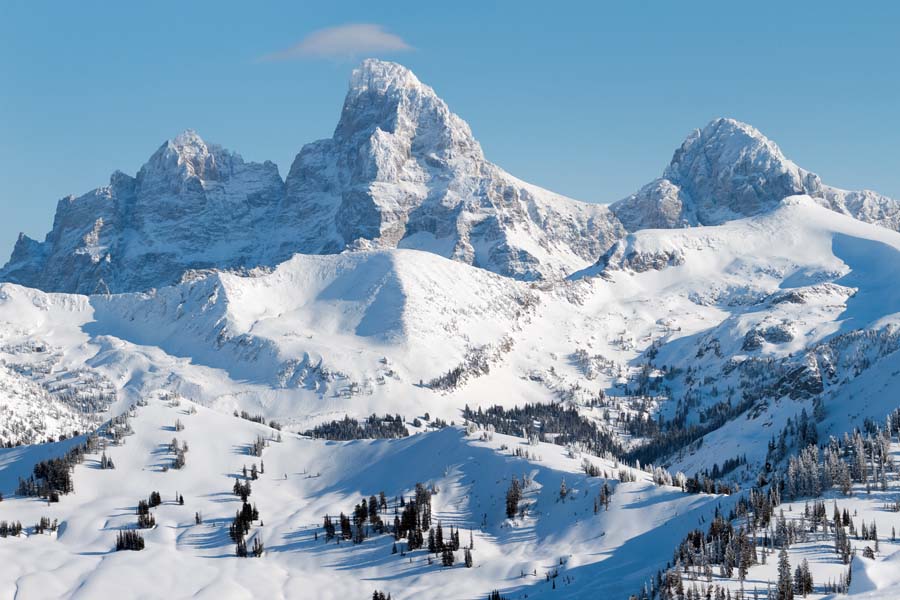
Notorious for its jagged peaks, deep snow and world-class skiing, Wyoming’s Teton Range spreads north to south along the Idaho border. Home to infamous backcountry lines and resorts like Jackson Hole and Grand Targhee, the Tetons boast some of the best snow stats in the country.
The snow in the Tetons is 5% drier (and lighter) than average, and when it snows, it dumps. Jackson Hole gets over 450 inches each season, and Grand Targhee reports an average snowfall of over 500 inches. Thats over 40 feet. Of snow. Each season.
So why are the Tetons such a dream destination for powderhounds?

High precipitation levels in the Teton range are a result of the Rocky Mountain moisture channel. Moisture, in the form of clouds and humid air, travels from the Pacific Ocean through a gap between the Cascade and Sierra ranges. The channel continues along the Snake River Plain, uninterrupted until it meets the sharp, jagged peaks of the Tetons.
This moisture is then released as rain and snow, resulting in drastically higher levels of precipitation in the Rockies than in the surrounding areas.
The Teton Range receives an average of 21 inches of precipitation annually, and just about half of that comes down as snow.

Temperature has a dramatic impact on both the amount and weight of snow. The snow ratio compares how many inches of snow equate to an inch of water. At 32° Fahrenheit, the average snow ratio is about 10 inch of snow to 1 inch of rain. As temperatures fall into the teens and single digits, the snow ratio can grow to 20:1 or even 30:1.
The Tetons are subject to variable temperatures year round, with the first heavy snowfall of the year typically happening before November 1. Between December and February, the average high temperature in Grand Teton National Park is 28° F.
Consistently cold weather and frequent precipitation are a perfect recipe for a lot of fresh, light, powdery snow.

Temperatures drop almost 4° F for every 1,000 ft gain in elevation, allowing snow at high altitudes to persist through the spring and often well into summer months.
While Jackson Hole may be more well-known, Grand Targhee has a slightly higher base elevation and sits on the western slope of the Tetons, exposing Targhee to slightly more snowfall than its eastern counterpart. Whether you’re heading to Jackson, Targhee, or the backcountry, the Tetons are sure to satisfy your powder needs.


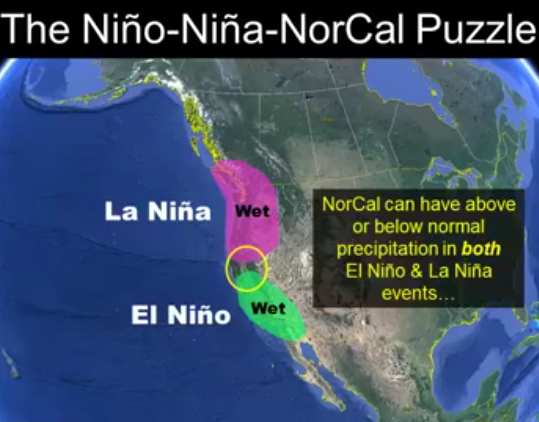
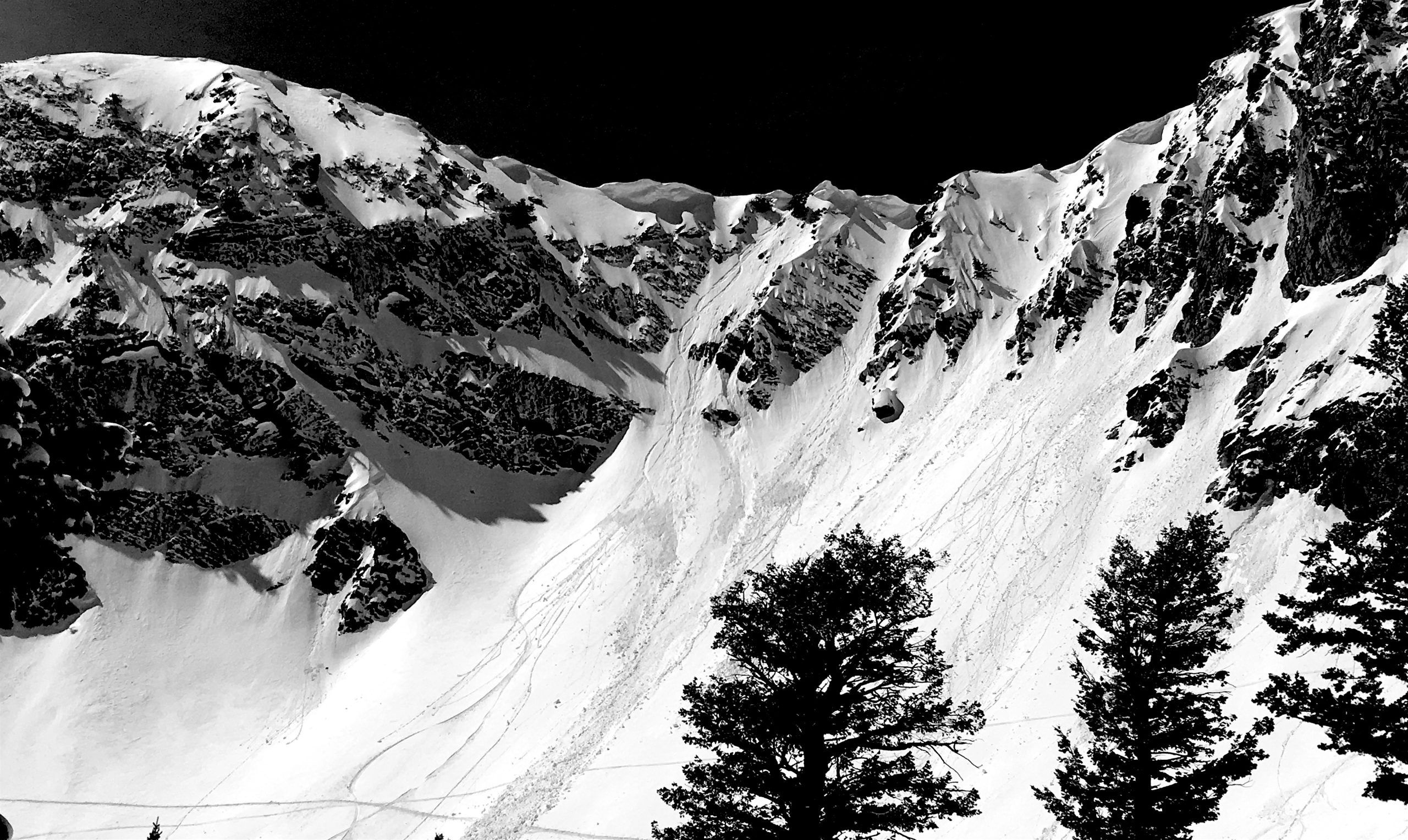
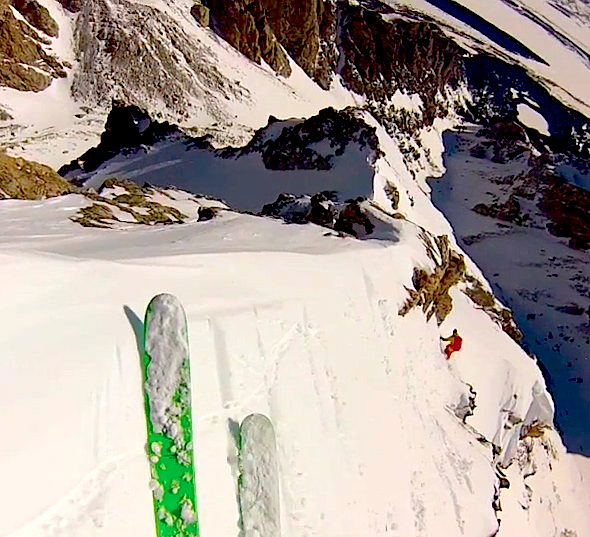
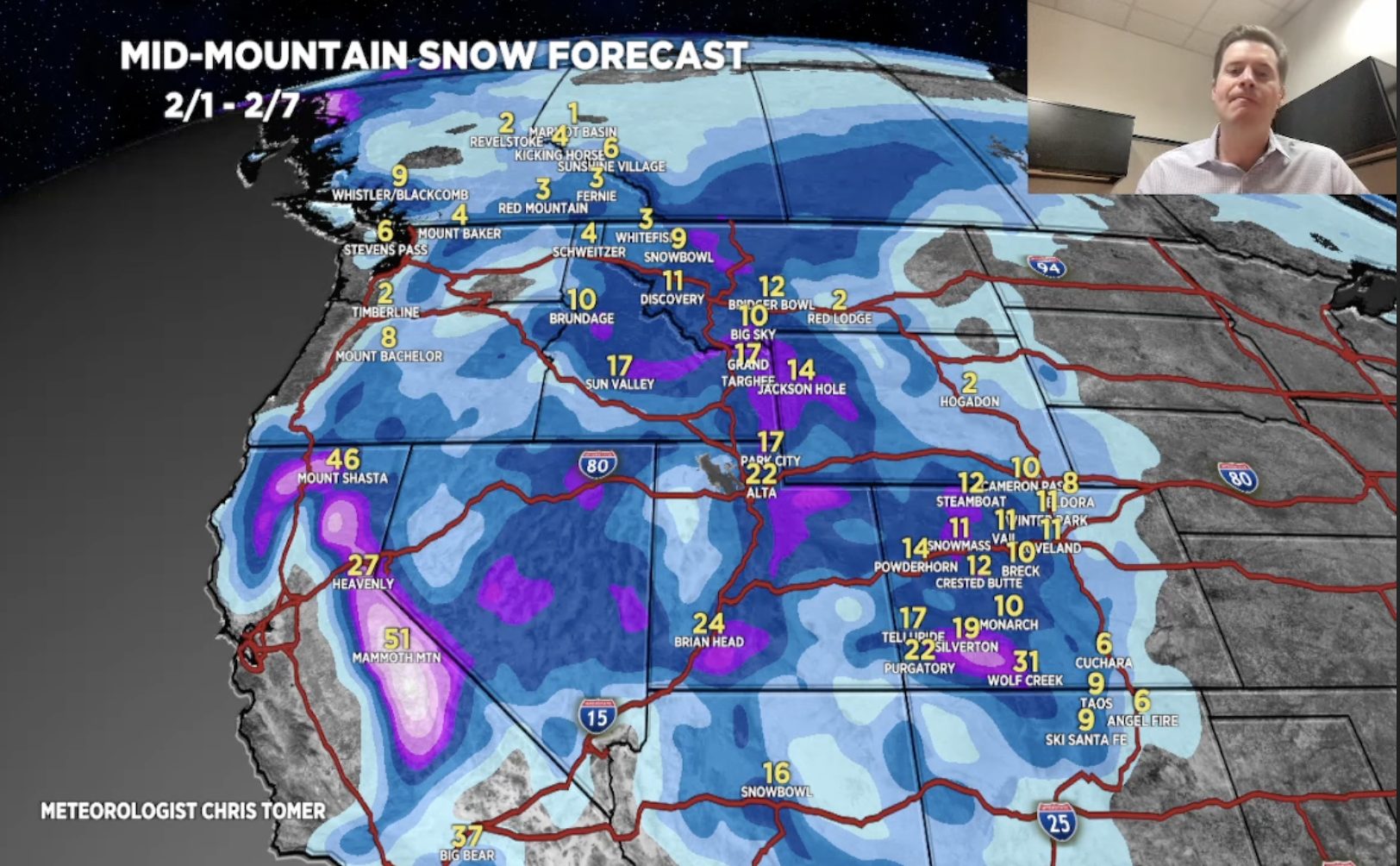
what siesmic event created the channel? was it the yellowstone volcano and plate tectonic?
On the map showing the channel we are halfway between Boise and Idaho falls on the southern end of the Snake River Basin, which is the channel.
Our Hill Pomerelle sits in that moisture channel as well. Our base is 8,000 feet. We only have 1000 vertical and not as steep of terrain but we get as much and many years more snow than either Targee or Jackson. Come give us a try we are just our side of Burly Idaho. Great family ski area.